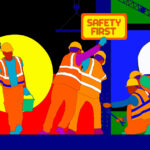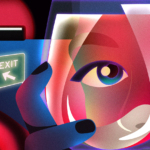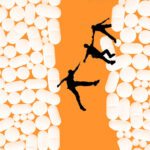It takes more than a substance to make an addiction. Compassion will aid recovery more than demonising a drug.
I was contacted not long ago by Andrea Simmons, founder of the Australia Anti Ice Campaign – a registered charity that “aims to expose the drug Ice for what it really is, an insidiously poisonous chemical concoction that eventually, and often rapidly, destroys the physical and mental health of almost everyone who uses it, with the destruction of families and friendships, and often suicide, as the ultimate outcome”.
Ms Simmons is a survivor of ice addiction and believes that this “problem” can only be addressed by the community. With that I totally concur.
I was invited to share the podium with her at a community forum. I would be sharing my professional perspective, as an addiction medicine physician along with others who have lived experience, and Ms Simmons herself, who somewhat surprisingly became an ice addict at the age of 40.
I did have some reservations. The “anti-ice” focus carries the implication that all drugs are different and unique. My own view is that a drug is a drug is a drug. Only the magnitude of a psychoactive drug’s impact on the human brain’s reward centre varies between substances. All reward-inducing substances or “addictive” behaviours, such as gambling, have the same neurobiology. They result in dopamine and other feelgood neurotransmitters to be artificially dumped into our idiot brains.
At a public health level, the harms caused by alcohol and tobacco far outstrip those from ice. The difference is that alcohol is an attractively packaged poison, the product of rotting fruit. And it is legal. Ice, on the other hand, is apparently in its own league and is associated with seedy illegal activities. Ice is devastating for the individual, but population prevalence-wise, a minor player.
Nevertheless, I felt privileged to have been asked to contribute to the discussion. I think we learn more from listening to those with lived experience (our patients) than from textbooks and arm’s length academic research. I was flattered at the end of the evening when many in the audience approached me and said how much they appreciated my presentation.
This motivated me to share it with a wider audience, so what follows is a version of it.
I work with those who have an unhealthy relationship with substances. I have done so professionally for 24 years. At one stage, I had a checquered relationship with alcohol, so I do have some personal experience as well as professional learnings obtained from my patients and from my study of contemporary neuroscience, philosophy, and other relevant academic research.
I think of our relationship with substances and behaviours as having different layers. Imagine these layers like an onion. I’ll talk about just two of them.
Recently, I read a fascinating book called The Idiot Brain by neuroscientist Dean Burnett. It’s not your typical boring science book; it’s quite humorous in parts. In the book, he talks about how our brains have a reward centre that was helpful to our ancestors 5000 years ago. It motivated us to seek things like energy-dense food, human interaction, sex and a safe place to stay. Nowadays, it gets us into trouble with substances that are not good for us, like tobacco and strong drugs.
Ice is a potent form of methamphetamine. It’s like having an over-the-top, super-intense pleasure experience that is extraordinarily “rewarding” to the brain and therefore addictive. It’s like alcohol amped up by a wall of Marshall amplifiers.
But for an unhealthy relationship with substances to develop, you need three things. One, a substance or behaviour that gives you a reward. Two, a person with their own unique complexities, especially what we call the “subconscious”. And three, an environment or cultural context.
Now, let’s focus on that second layer, the individual, especially their early years. Research shows that the first 2000 days of a person’s life, starting from conception, are crucial for their future health. If bad things happen in the first five years, such as trauma or tough circumstances, it can affect how their brain’s reward centre responds to drugs later in life.
From what I’ve seen in my work, if we could tackle issues like poverty, violence at home and other bad experiences in early childhood, we could reduce addiction a lot.
There’s a simple idea that addiction is the opposite of connection. If a child grows up not trusting adults and feeling isolated, they might prefer escaping with substances to being part of a healthy social group.
My concern is that it is easy to demonise a substance and ignore the other layers. The demonising itself can stand in the way of a positive outcome.
As a community, we need to approach the ice problem with compassion. This means listening, understanding, and forgiving users. Mostly they use because of early trauma history.
For those who know someone who is an addict, there is no quick cure for addiction. Telling someone to just say no when they are in the height of their addiction is unhelpful. But there is hope. You can reach a place where each day you say “no” to ice.
Let’s face it, humans are typified by folly, paradox, and irony. We are driven into thinking that we are entitled to feel rewarded. I believe that as a community we all need to have an open, stigma-free conversation about that entitlement and our collective idiot brains. We need to engage in a why hunt rather than a witch hunt on the issue of addiction.
Demonising a substance or a behaviour only fosters stigma, which paradoxically makes it harder for the individual to ask for help. There’s a strong link between psychic shame and poor mental health. People with psychic debt are more likely to face common mental health issues, which are the result of adverse childhood events, prolonged stress, depression, and anxiety. This debt can affect your physical wellbeing, due to the stigma associated with outing yourself as having a problem. No one want to be seen as vulnerable, yet vulnerability is synonymous with humanity.
That’s why I believe that, as a community, we need to be more understanding of this kind of frailty.
Substance use disorder is in part a social network issue. The community that produces the social network is part of the problem and therefore part of the solution.
“But I don’t want to go among mad people,” said Alice.
“Oh, you can’t help that,” said the cat. “We’re all mad here. I am mad. You’re mad.”
“How do you know I’m mad?” asked Alice.
“You must be,” said the cat, “or you wouldn’t have come”.
What we and our idiot brains need is greater health literacy and community compassion.
Associate Professor Kees Nydam was at various times an emergency physician and ED director in Wollongong, Campbeltown and Bundaberg. He continues to work as a senior specialist in addiction medicine and to teach medical students attending the University of Queensland Rural Clinical School. He is also a poet and songwriter.





